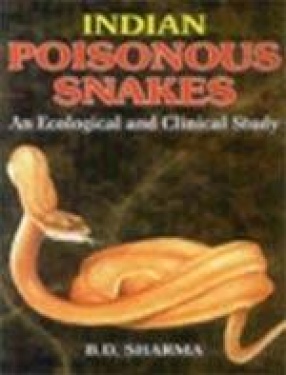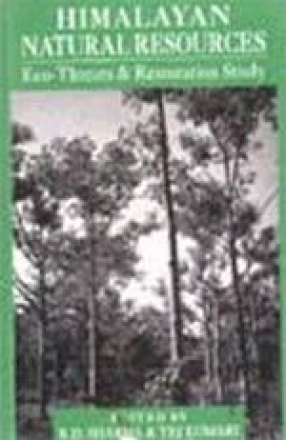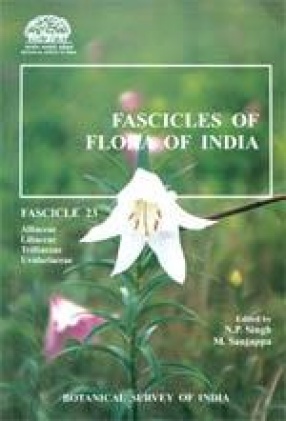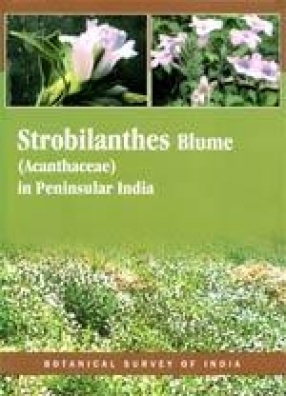Flora of India: Introductory Volume (Part 1)
Synopsis
India with over 45,000 species of flora and 75,000 species of fauna distributed in its two major biogeographic realms have 10 biogeographic zones and two biodiversity hotspot regions of the world, is justifiably recognized as one of the World's 12 magacentres of biodiversity. Such a richness of varied biomes from tropical wet evergreen forests to deserts and alpine vegetation to coastal systems understandably needed the establishment of a well organized institution like the Botanical Survey of India for undertaking detailed botanical explorations and to document systematically this natural heritage. Since the publication of the Flora of British India and the subsequent regional floras, several botanical explorations have been undertaken in different parts of India and publications describing the forests, vegetation types, floristic characteristics (in many cases with detailed lists of floral elements) of many botanically less understood parts in the country have been published especially after the stepping up of botanical exploratory activities by the reorganised Botanical Survey of India in the year 1954. This activity contributed vastly to our better understanding of the vegetation, forest types and floristics and has also greatly enriched the Indian herbaria with botanical specimens from several remote areas and regions of the country which were botanically poorly known in the past enabling the BSI to bring out several state and district floras or of floristically significant areas. The data collected on different aspects relating to the natural vegetation and certain man-made changes in the vegetation patterns particularly during the last one hundred years have necessitated to make suitable amendments to our knowledge on the forest types, phytogeography, endemism on one hand and on the gradual loss of pristine vegetation, habitats and certain floristic elements of significance on the other. This enriched data bank has paved the way to undertake the revision of Flora of India in a new format. Since 1978, the Botanical Survey of India has drawn up plans to bring out revisionary accounts of the flowering plant families and this effort has resulted in the publication of 22 fascicles of Flora of India and 5 volumes of the revised national flora till date. It is thought appropriate and necessary to describe different salient aspects pertaining to the Indian floristic richness in different phytogeographical zones in a manner more perceptible and understandable to botanists, foresters, ecologists, conservationists, ethnobotanists, and others interested in our wild plants through several suitably captioned chapters with a view to present an overall panorama of the Indian floristic estate in a book : Flora of India - Introductory Volume. In all about 30 different chapters describing the prime vegetation types in different pytogeographical and ecological systems; ecozones; endemism, centres of plant diversity and phytogeographical affinities; exotics; ethnobotanical, medicinal and plants of economic value; plant based industries; wild relatives of cultivated plants; wild plants of horticultural significance; endangered plants, habitats and their conservation; protected area network; botanic gardens, and the statistical analysis of flowering plants in Indian flora have been considered for this volume.
Read more
93.10
83.79
$
98.00 $
Free delivery Wolrdwidе in 10-18 days
Ships in 2-4 days from New Delhi
Membership for 1 Year $35.00
Get it now and save 10%
Get it now and save 10%
BECOME A MEMBER
Books by the same authors
-

Indian Wildlife: Threats and Preservation
-

Environmental Pollution
-

Indian Poisonous Snakes: An Ecological and Clinical Study
-

Himalayan Natural Resources: Eco-Threats and Restoration Study
-

Floristic Diversity and Conservation Strategies in India, Vol-I: Cryptogams and Gymnosperms (In 6 Vols.)
-

Botany of Kaziranga and Manas
-

Fascicles of Flora of India: Fascicle 22
-

Flora of India: New Series: Malpighiaceae-Dichapetalaceae (Vol. 4)
-

Phytotaxonomy: Journal of Association for Plant Taxonomy: (Vol. I)
-

Fascicles of Flora of India: Fascicle 23
-

Strobilanthes Blume (Acanthaceae): In Peninsular India






Bibliographic information
P.K. Hajra
M. Sanjappa